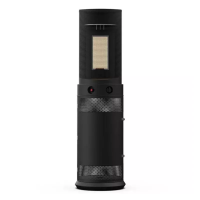Mimosa Backhaul Help Content
Mimosa Backhaul Performance
Copyright © 2014 Mimosa Page 22
Backhaul Tx Power Optimization
Should I always choose the maximum Tx Power setting for best performance?
Not necessarily. The answer depends on the maximum achievable signal to noise ratio (SNR) for a given link. You
may see a tooltip on the Channel & Power page to this effect like the one below.
Background
A theoretical amplifier would apply gain (the output to input power ratio) linearly to any input signal. For instance, a
10 dB amplifier should amplify a 0 dBm signal to 10 dBm, a 10 dBm signal to 20 dBm, and so on. However, typical
amplifiers are not perfectly linear for all input power. Above a certain power level, the input signal begins to distort
during amplification (in the Compression Region). A distorted output signal from a transmitter is more difficult for
the receiver to interpret, leading to higher EVM and lower MCS.
Recommendations
If the link is short (high Rx Signal Strength), or if SNR is high, select lower Tx Power to allow the transmitting
amplifier to operate within it's Linear Region and avoid distortion in the Compression Region.
If the link is long (low Rx Signal Strength), or if SNR is low, select higher Tx Power and accept some distortion in

